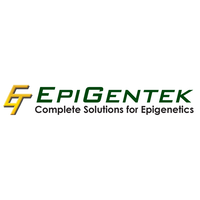SYT10 / FITC /
Product Details
| Description | SYT10 Polyclonal Antibody, FITC Conjugated. This antibody is a Rabbit IgG that reacts with Human. Uniprot ID is Q6XYQ8. | |
|---|---|---|
| Conjugate | FITC | |
| Clone | ||
| Target Species | Human | |
| Applications | ELISA | |
| Supplier | Epigentek | |
| Catalog # | Sign in to view product details, citations, and spectra | |
| Size | ||
| Price | ||
| Antigen | ||
| Host | ||
| Isotype |
About SYT10
Predicted to enable several functions, including phospholipid binding activity; protein dimerization activity; and syntaxin binding activity. Predicted to be involved in several processes, including cellular response to calcium ion; regulation of secretion by cell; and sensory perception of smell. Predicted to be located in synapse and transport vesicle membrane. Predicted to be integral component of membrane. Predicted to be active in exocytic vesicle and plasma membrane. [provided by Alliance of Genome Resources, Apr 2022]
Predicted to enable several functions, including phospholipid binding activity; protein dimerization activity; and syntaxin binding activity. Predicted to be involved in several processes, including cellular response to calcium ion; regulation of secretion by cell; and sensory perception of smell. Predicted to be located in synapse and transport vesicle membrane. Predicted to be integral component of membrane. Predicted to be active in exocytic vesicle and plasma membrane. [provided by Alliance of Genome Resources, Apr 2022]
About FITC
Fluorescein isothiocyanate (FITC) has an excitation peak at 495 nm and an emission peak at 519 nm. The name FITC is a misnomer in that the isothiocyanate is a reactive form of this dye. Once FITC is conjugated to an antibody, it is simply Fluorescein conjugated. FITC is one of the most widely used dyes for fluorescent applications, therefore most instruments come standard with a 488 nm laser and FITC filter set up. FITC is commonly conjugated to secondary antibodies and used in applications such as flow cytometry, immunocytochemistry, and immunohistochemistry. FITC is relatively dim, sensitive to photobleaching and it is susceptible to changes is pH. There are better performing alternatives to FITC, like Vio®Bright 515, Alexa Fluor™ 488, iFluor® 488, CF®488A and DY-488. FITC is a long-time generic dye with no sole manufacturer or trademark.
Fluorescein isothiocyanate (FITC) has an excitation peak at 495 nm and an emission peak at 519 nm. The name FITC is a misnomer in that the isothiocyanate is a reactive form of this dye. Once FITC is conjugated to an antibody, it is simply Fluorescein conjugated. FITC is one of the most widely used dyes for fluorescent applications, therefore most instruments come standard with a 488 nm laser and FITC filter set up. FITC is commonly conjugated to secondary antibodies and used in applications such as flow cytometry, immunocytochemistry, and immunohistochemistry. FITC is relatively dim, sensitive to photobleaching and it is susceptible to changes is pH. There are better performing alternatives to FITC, like Vio®Bright 515, Alexa Fluor™ 488, iFluor® 488, CF®488A and DY-488. FITC is a long-time generic dye with no sole manufacturer or trademark.
Experiment Design Tools
Panel Builders
Looking to design a Microscopy or Flow Cytometry experiment?
Validation References
Reviews & Ratings
| Reviews |
|---|
Looking for more options?
130 SYT10 antibodies from over 15 suppliers available with over 40 conjugates.





